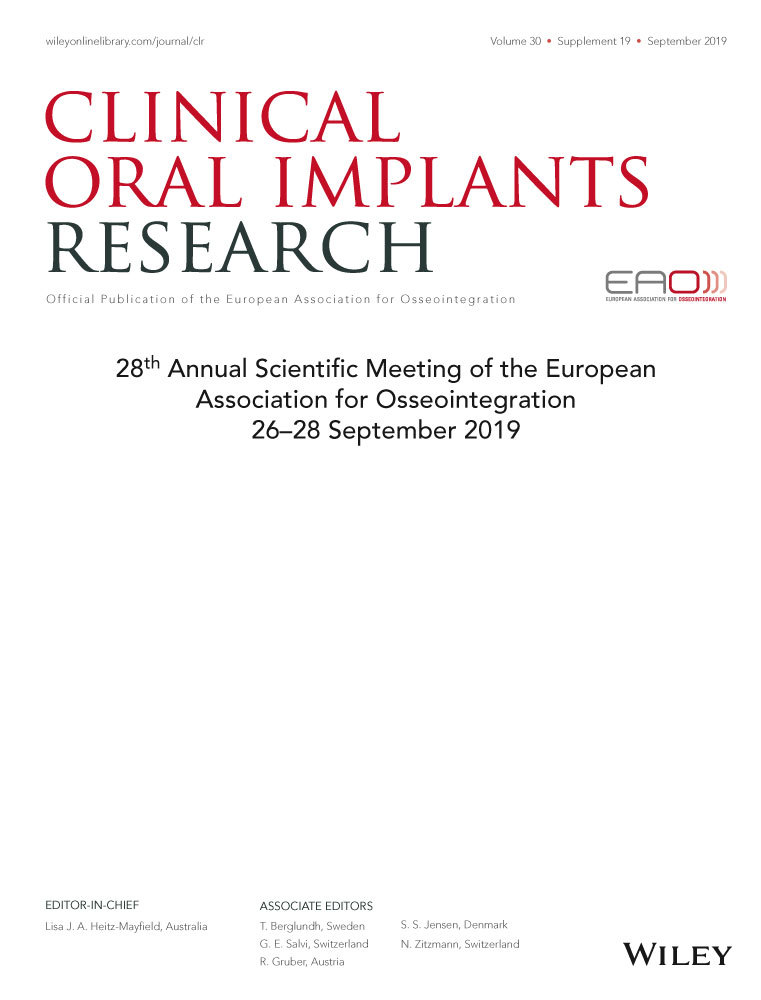Assessment of the histological features of 2 different materials used in sinus augmentation
15765 Poster Display Clinical Research – Peri-implant Biology
Background
There is a wide range of possible bone substitute materials that can be used for sinus augmentation. Hydroxyapatite is considered as an almost non-resorbable material on the other hand β-tricalcium phosphate shows a much higher biodegradability. To combine positive aspects of the two calcium phosphates, biphasic materials consisting of different hydroxyapatite and β-tricalcium phosphate-ratios have been developed.
Aim/Hypothesis
The aim of this study is to evaluate sinus augmentation using Symbios® Biphasic Bone Graft (80% fl-TCP + 20% HA) versus using Symbios® Algipore® bone substitution material (almost 100% HA) in terms of osteoconductivity using histomorphometric analysis of new bone formation.
Material and Methods
20 patients requiring 2-stage sinus grafting have been included in the study in compliance with the defined inclusion and exclusion criteria and randomized into a Symbios and an Algipore group. Sinus floor elevation was performed under local anesthesia utilizing the lateral window approach and the group-specific grafting material. After a 3 months healing period a biopsy of the regenerated area was taken to assess the bone quality histologically and histomorphometrically. During implant placement 6 months after augmentation a second biopsy of the augmented region was taken at the planned implant position. The biopsies were then processed according to the Karl Donath method for undecalcified thin ground sections. One slice per biopsy was obtained. After staining all 40 slices according to Levai-Laczko, slices were scanned with a Zeiss® scanning light microscope for further analysis. The parameters new bone, old bone, bone substitute, new bone to bone substitute contact were measured.
Results
Sinus augmentations with both materials showed high clinical success rates. The quality of the augmentation was not affected by the biopsies, which could be demonstrated by the stable Periotest values and success rates. Histological analysis showed signs of osteoconductivity in both materials. The microstructure of both substitutes seemed to induce a different bone reaction between pristine material surfaces and crumpled material surfaces. Pristine material seems to be more surrounded externally and crumpled material to be resorbed and penetrated with newly formed bone. Preliminary data suggested that the latter case is more frequent in the Symbios group resulting in a tendency of more newly formed bone. This can be interpreted as a sign of a higher resorption rate of Symbios when compared to Algipore and corresponds to a stronger osteoconductivity. The proportion of newly formed bone in both groups increased from the 3 months to the 6 months biopsy.
Conclusion and Clinical Implications
Both tested materials were suitable as bone substitutes for sinus floor elevations. The histological evaluation showed signs of proper healing in both groups, and the augmentation material served as a guide for new bone formation. In particular, it could be observed that newly formed bone preferred to grow through the crushed Symbios particles showing a high degree of osteoconductivity. Algipore on the other hand showed a high material stability without significant signs of resorption.




